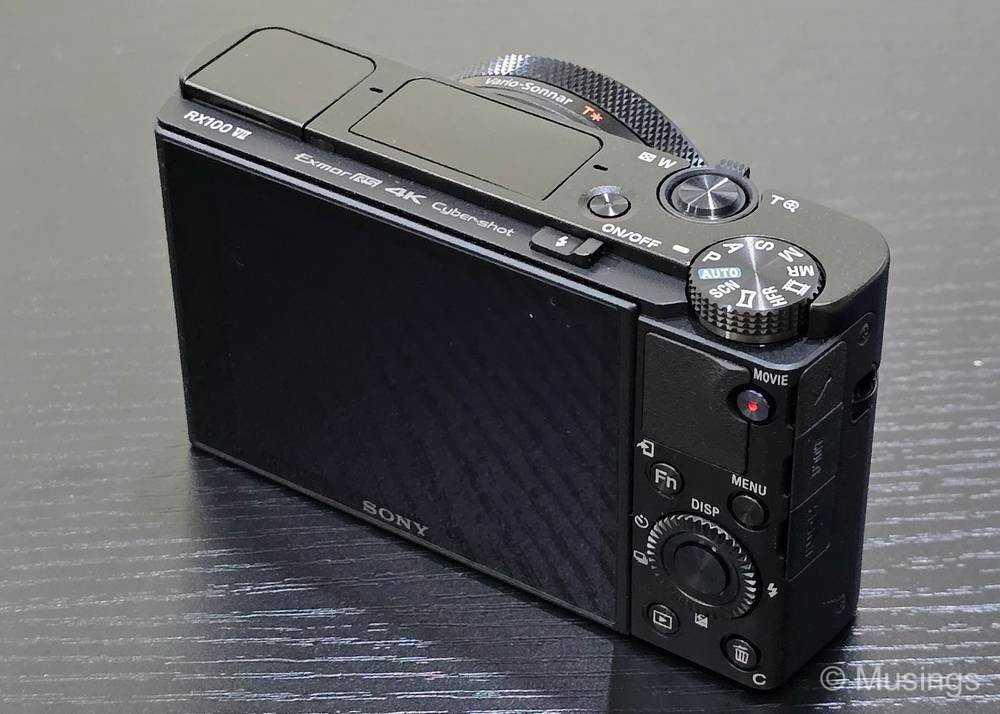My purchase of the Sony RX100 VII has been four years in the gestation! I have long wanted one of the Sony RX100’s, even at the point when I purchased the Canon G7X Mark II 7 years ago. This Sony series of 1″ sensor compacts are generally considered the best all-rounders that you can get – they are small, very well-built, chock full of features, with the most recent Mark VII iteration even inheriting selected features from Sony’s very expensive A9 full-frame cameras.
But they’ve not been without their quirks. The RX100s year on year are expensive, battery life isn’t the greatest, and the lens change from a 24-70mm to the current iteration’s 24-200mm has been controversial. Sure, it’s much better as a compact travel camera, but that the lens now starts at f2.8 and rapidly closes down the focal length means it struggles in low light.
I was fairly determined that I needed a replacement for the Canon G7X Mark II, but I’ve been putting off that decision for a few years now. The need to look into an alternative has become more urgent for our upcoming Cebu trip, as I was determined not to lug along an interchangeable lens camera this time – the first time I would not be doing so for a holiday – but I also needed something that could do outdoor activities better than the Canon G7X Mark II – i.e. something that can AF well – and in terrifically sunny weather too i.e. it’d need to have an EVF.
Unfortunately, there really aren’t a lot of options for 1″ compact cameras these days. Panasonic hasn’t put out a new model for years, and the RX100’s closest alternative feature wise – the Canon G5X Mark II – isn’t sold in Singapore anymore. The RX100 VII itself was released in 2019, and there has been no indication that Sony will be putting out the VIII anytime soon, and some enthusiasts even think that the VII might be the last model in the RX100 line. Interestingly, the camera is also gradually going out of stock in several stores both internationally and here in Singapore. So, if I was going to get one, it’d have to be soon. The camera normally retails for around SGD1579, but I was fortunate to find a store having one for SGD1379 – it had in fact even earlier informed that they no longer had this camera in stock in an earlier check. Without hesitation, I went by to pick up the camera at lunch time.
For an evening setting it up and doing some quick learning of the camera, my main takeaways:
The RX100 is truly compact. It’s a couple of millimeters shorter and less wide than the Canon G7X Mark II. That might not sound like much, but when I’m intending to keep this camera in my pocket, every millimeter counts!
The pop-up EVF is small, but works very well still, and as I wear glasses, I was able to adjust the tiny diopter-adjustment lever to ensure the EVF image is sharp. This inclusion of the EVF on this compact would be critical when it comes with us for our Cebu trip this June.
The camera really feels as slippery as as a bar of soap! This is a camera one absolutely needs to accessorise with a wrist strap, a cage, or a grip attachment.
The camera makes use of Sony’s very dense and arguably disorganised menu system. I’ve had time to learn Sony’s camera configuration menu system for years now since my Sony A73, so I had a good sense of where to find things. But for anyone else new to Sony, the menu system will be daunting.
The hooks to loop strap eyelets is really small and seems to be designed to sit flushed with the camera body. Unfortunately, it also means that my Peak Design anchor links simply could not fit in.
The RX100 supports in-camera charging, but inexcusably with the antiquated Micro USB standard. I still can’t quite figure out why this is so, especially that the A73 was released a year in 2018 and a full year before the RX100 VII, and was already on USB-C.




As to the quality of images that is coming out of this RX100, well, that’d have to come in a follow-up post when I can find the time to take out of the house to take pictures. More to come soon!